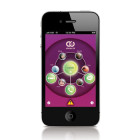

An 11-year-old denied making a threat and was allowed to return to school. Tennessee police arrested him anyway.
|
In late September, Torri was driving down the highway with her 11-year-old son Junior in the back seat when her phone started ringing.
It was the Hamilton County Sheriff’s deputy who worked at Junior’s middle school in Chattanooga, Tennessee. Deputy Arthur Richardson asked Torri where she was. She told him she was on the way to a family birthday dinner at LongHorn Steakhouse.
“He said, ‘Is Junior with you?’” Torri recalled.
Earlier that day, Junior had been accused by other students of making a threat against the school. When Torri had come to pick him up, she’d spoken with Richardson and with administrators, who’d told her he was allowed to return to class the next day. The principal had said she would carry out an investigation then. ProPublica and WPLN are using a nickname for Junior and not including Torri’s last name at the family’s request, to prevent him from being identifiable.
When Richardson called her in the car, Torri immediately felt uneasy. He didn’t say much before hanging up, and she thought about turning around to go home. But she kept driving. When they walked into the restaurant, Torri watched as Junior happily greeted his family.
Soon her phone rang again. It was the deputy. He said he was outside in the strip mall’s parking lot and needed to talk to Junior. Torri called Junior’s stepdad, Kevin Boyer, for extra support, putting him on speaker as she went outside to talk to Richardson. She left Junior with the family, wanting to protect her son for as long as she could ...

New Online Service Allows College Students to Compare Financial Aid Data Across Country
|
This week, the Consumer Financial Protection Bureau (CFPB) launched a beta version of the Financial Aid Comparison Shopper, an online service designed to help prospective and current college students make financial plans for their post-secondary schooling. The new service allows users to access financial aid information as it pertains to more than 7,500 colleges and universities across the United States. Using data collected by official government statistical agencies, the Financial Aid Comparison Shopper evaluates a wide range of financial information, from estimated student loan payment totals to college-specific data such as graduation and retention rates, as well as federal student loan default percentages. Additionally, the new service includes a “Military Benefit Calculator” that allows service members and veterans to estimate military tuition assistance and GI Bill aid. Last fall, the CFPB launched the “Know Before You Owe” student loan project, unveiling a Financial Aid Shopping Sheet draft that served as a precursor to the Financial Aid Comparison Shopper service.

Reclaiming Future’s JMATE Updates and Live Blog
|
Our friends at Reclaiming Futures have settled in at the Joint Meeting of Adolescent Treatment Effiectiveness (JMATE) and have been live blogging the whole thing on their blog. Read on for all the updates. DAY ONE
JMATE 2012: Ask a Judge: Demystifying Juvenile Court and How Judges and Treatment Providers Can Partner Together Successfully by Liz Wu
Earlier this afternoon, I sat in on a JMATE panel with three judges who discussed how Reclaiming Futures works in their courts and why other courts should consider implementing the model. Judge Capizzi of Dayton, Ohio, began the presentation with the problem: too many teens today are struggling with drugs, alcohol and crime. Eighty percent of the youth Judge Capizzi sees have alcohol or other drug problems and many are self medicating.

New Smartphone App Aims to Prevent Date Rape
|
A recently released iPhone app may help teenagers and college students take a stand against sexual violence, according to Nancy Schwatzman founder and executive director of the app's developer, The Line Campaign, Inc. The app, called Circle of 6, uses GPS and text messaging to alert friends to your location if a date goes bad, or worse. “It is clear that there is a real need, and excitement about how young people can harness the technology they are already using,” said Schwartzman in a recent press release for the new iPhone app. More than 19,000 users have downloaded the app since its release last month. Schwartzman said that by the end of the year, she hopes that the application will be downloaded by an additional 10,000 teens and college students. The Circle of 6 application uses a number of pre-installed short message service (SMS) notifications, which are mapped to six friends or family members on a user's smartphone. Using the phone's GPS friends and family can locate the user.

The United States of Autism?
|
For 10 years the Centers for Disease Control and Prevention has been tracking the increase in diagnoses of autism in kids. Last month, the CDC released data showing that one in 88 children in the United States is being diagnosed with a cluster of symptoms associated with autism, which include:
• rigidity, or opposition to change
• difficulty interacting with others
• trouble making eye contact
• attachment to objects
• issues with language and self-expression. The results are skewed towards boys, with one in 54 being diagnosed, as compared to one in 252 girls. This is a 23 percent increase in cases since the CDC’s last report in 2009. But more shockingly is the 78 percent increase since 2007.

Nationwide Funding for State Pre-K Programs Lowest in a Decade, Report Finds
|
For decades, study after study have shown that children who attend pre-kindergarten programs are better prepared for the rest of their education, beginning in kindergarten and lasting all the way to college. They perform better on tests, repeat grades less often and need less special education than kids who did not attend pre-k regardless of socioeconomic status, according to research by The Pew Center on the States. But funding for pre-k programs across the country is steadily declining. In fact, a new report released today by the National Institute for Early Education Research (NIEER) at the Brunswick, N.J. campus of Rutgers University, finds most states aren’t even giving their pre-k programs enough cash to maintain quality standards and calling the “overall picture” of pre-k education “dim.”
The report, “The State of Preschool 2011 Yearbook,” ranks the states on their funding of pre-k programs and their availability to children using 10 benchmarks of quality pre-k standards. Only five state programs met all of NIEER’s 10 benchmarks.





